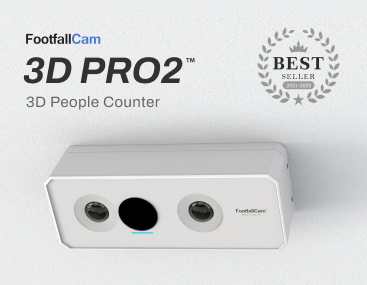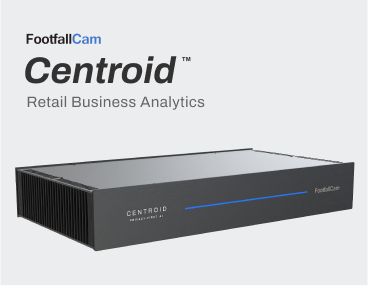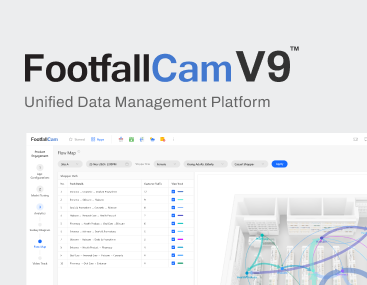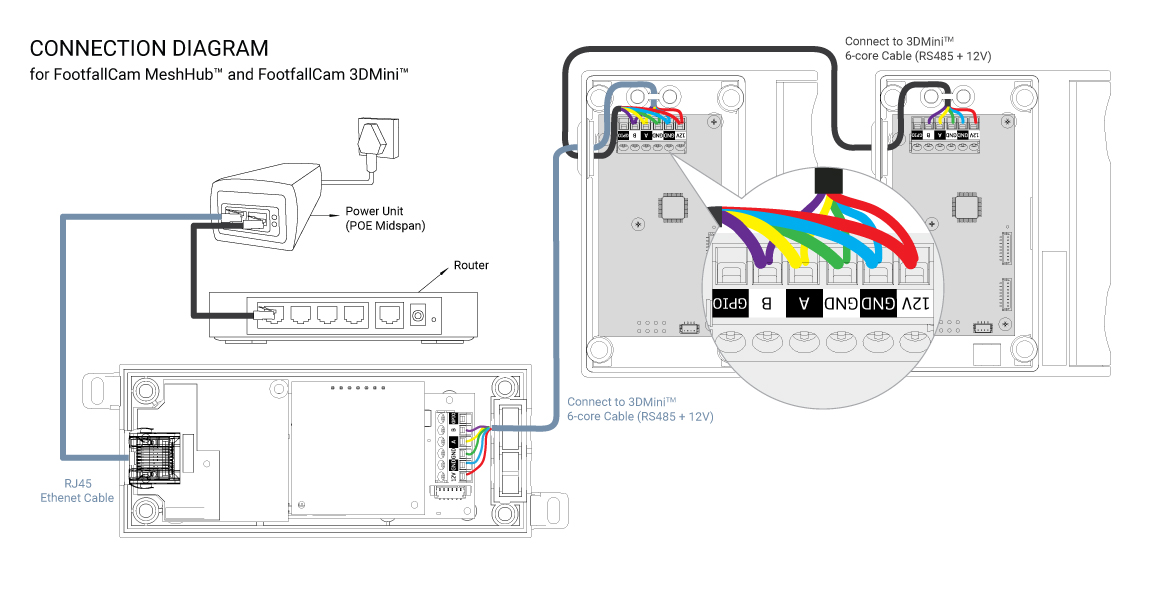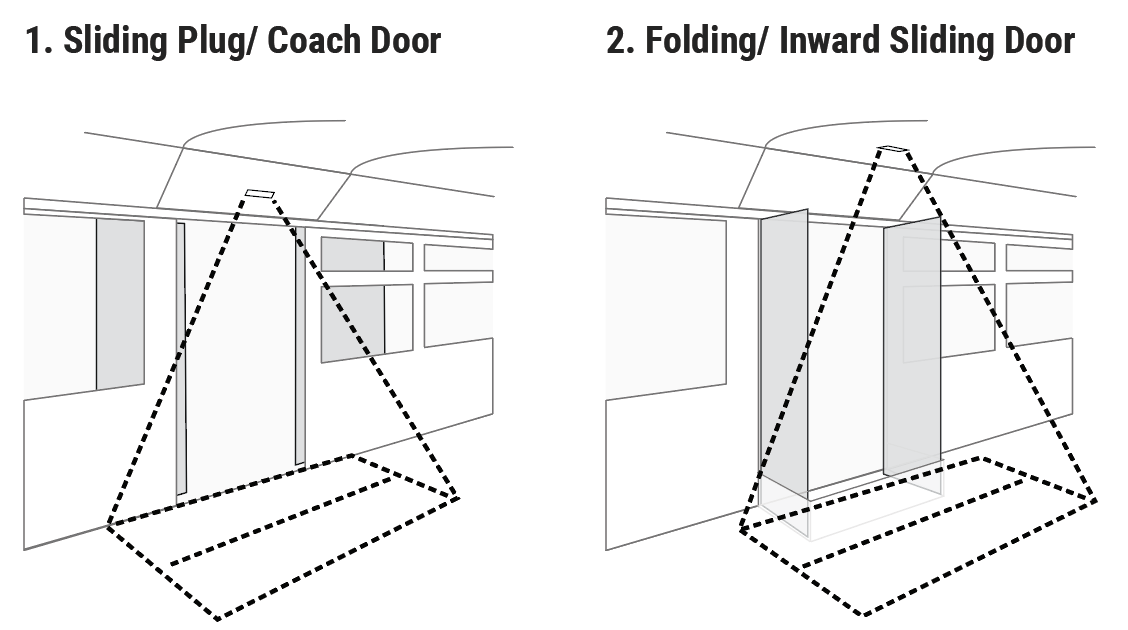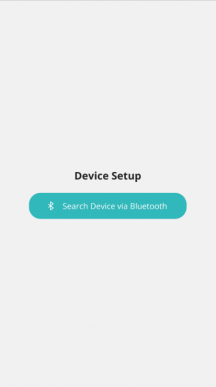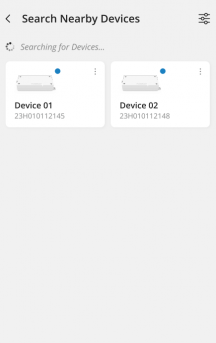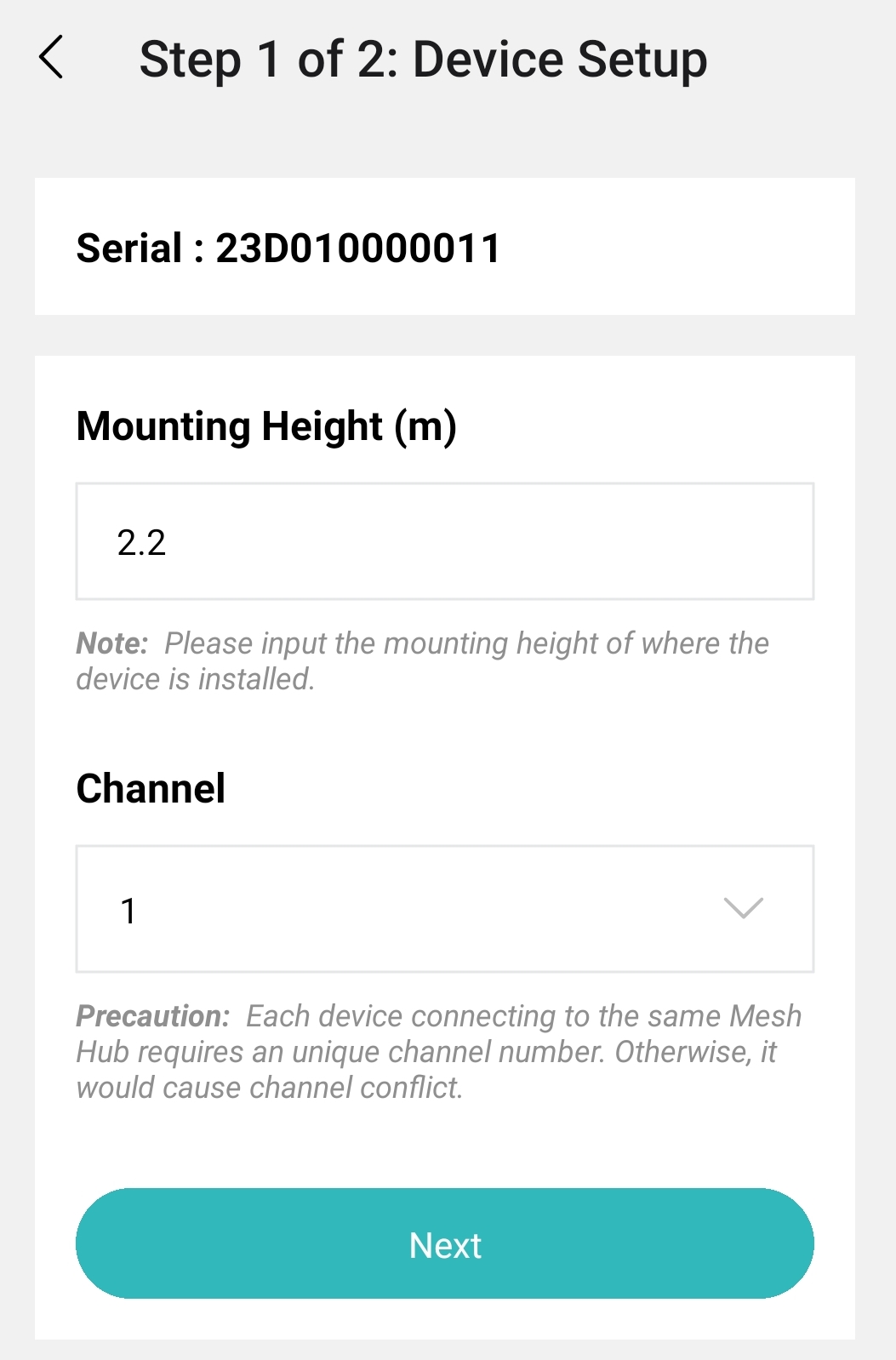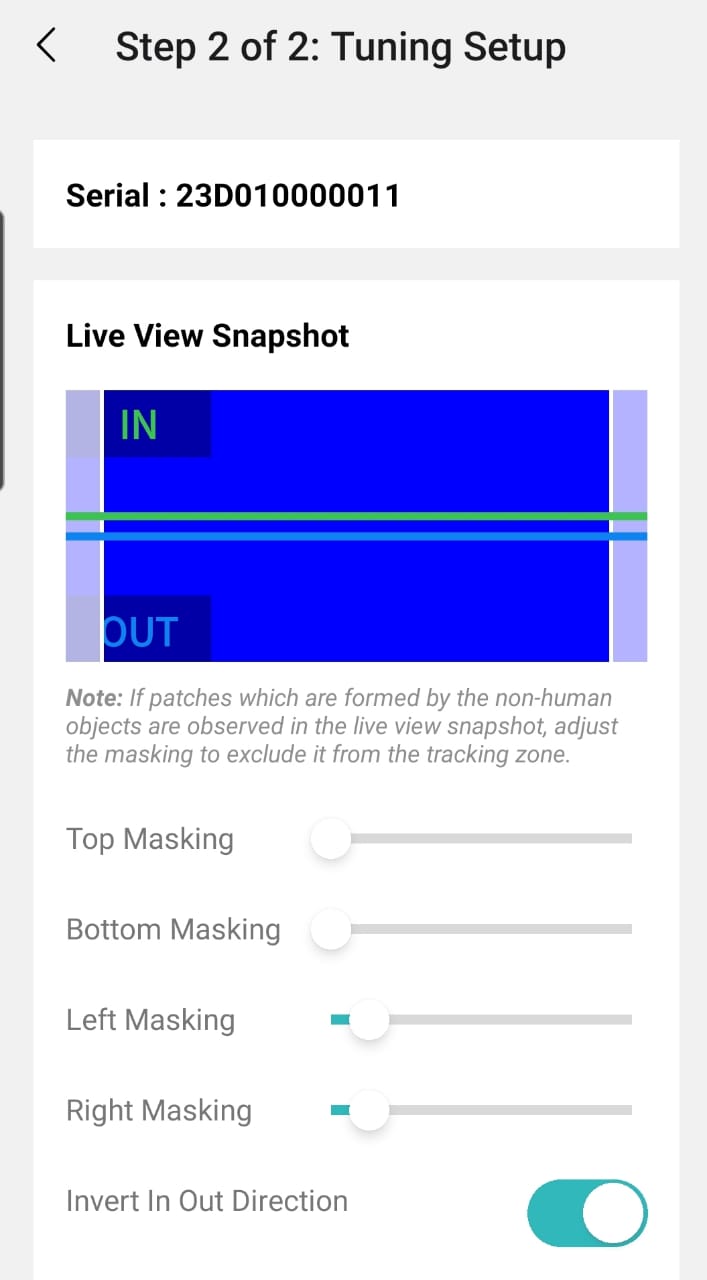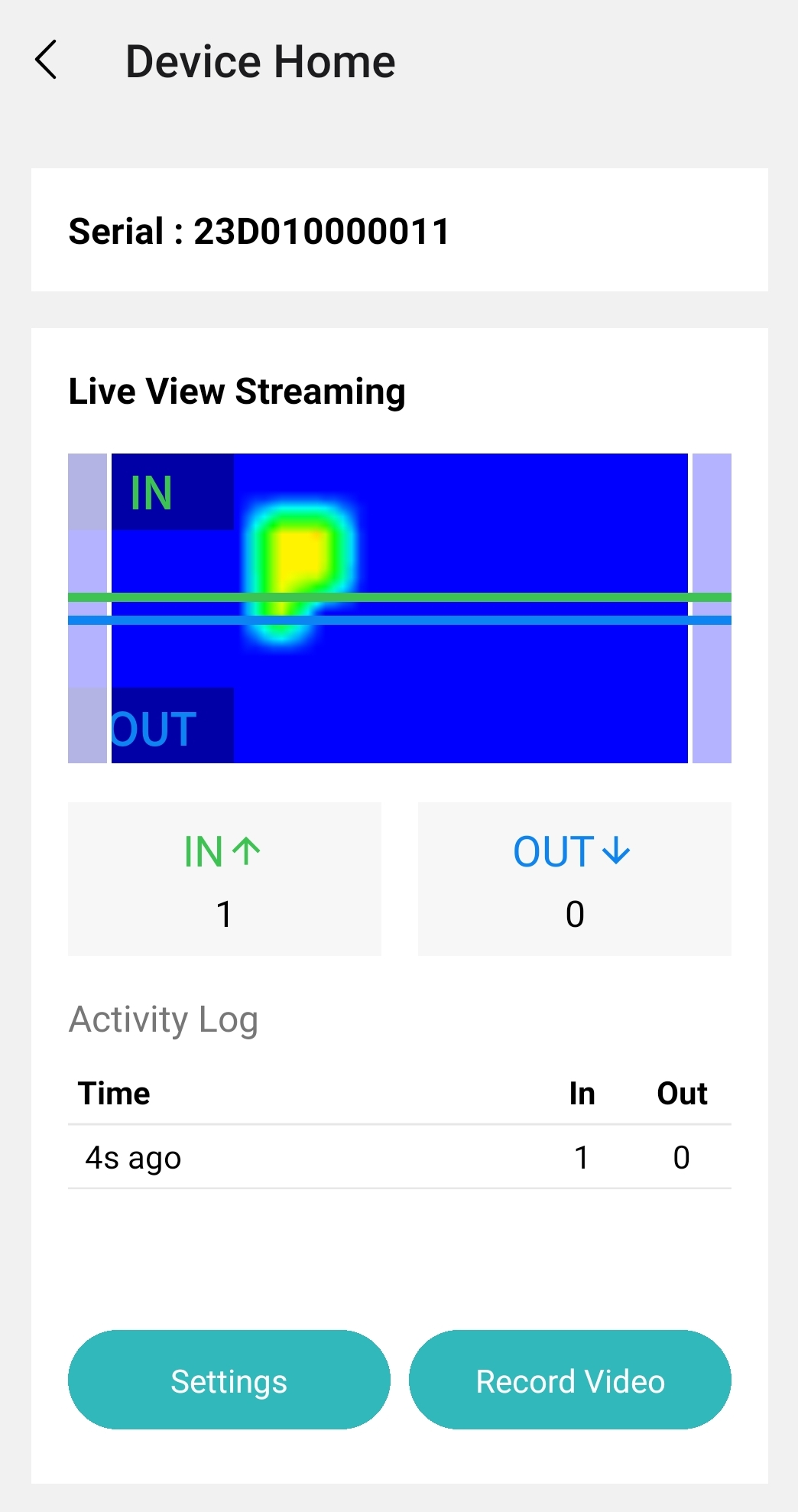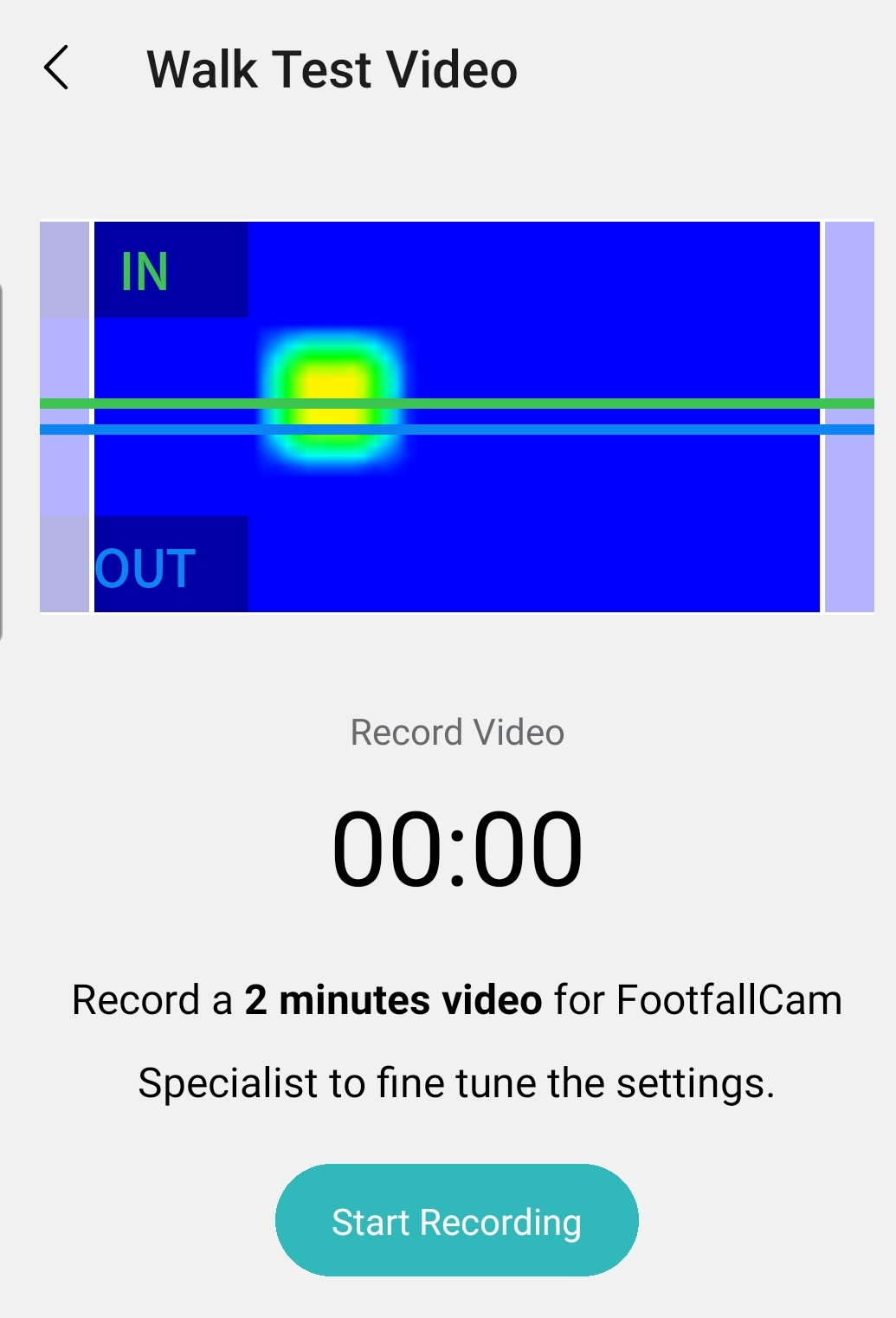1.0 Pre-Installation Preparations
1.1 Preparation Checklist
-
Sufficient Copper wires, Cat5 cable, Ethernet straight cable, Midspan
-
Screw Drivers and Drill
-
Windows-based Laptop to configure devices
-
Android mobile device with Bluetooth to set up devices
1.2 Pre-installation To-dos
-
Download and install FootfallCam Installation App at your mobile device via this link (currently supports Android devices only)
-
Download Mesh Hub Configuration Executable File to your laptop via this link
2.0 Installing the Device
2.1 Wiring Diagram
Connection Diagram (for Mesh Hub and 3D Mini)
1. Connect Ethernet cable from Mesh Hub to midspan.
2. Connect the 5 pins on Mesh Hub (all pins except GPIO pin) to the corresponding 5 pins on the 3D Mini V3 using Cat5 cable. Secure all wiring to the terminal block. Make sure each pin on the Mesh Hub is wired to the corresponding pin on 3D Mini using the same wire (as shown in the diagram above, indicated with different colors).
3. If you need to chain up a 2nd 3D Mini to Mesh hub, simply use another Cat5 cable to connect the same 5 pins on the 1st 3D Mini to the respective 5 pins on the 2nd 3D Mini. Repeat the same connection for each subsequent 3D Mini added (i.e. chain up 2nd 3D Mini to 3rd 3D Mini, and the 3rd one to the 4th one, and so on.).
4. Connect another Cat5e cable from midspan to router and turn the power on. The Mesh Hub will boot up, with its LED blinking green during the initialization process. The LED should settle down in static blue lighting once the initialization is completed (provided the IP address has been properly configured).
2.2 3D Mini Device Positioning
You can choose the most appropriate mounting location as long as it fulfills the following criteria:
-
Mounting height should not exceed 2.4m. Consult FootfallCam personnel if it is impossible to meet the height limitations, a bracket can be used the extend the device out from the side wall.
-
The vertical distance between the top edge of the door to the device location CANNOT be More than 10cm.
-
Ensure that the counter view is not blocked by any drop down obstacles. Refer to Clearance Guidelines.
-
Ensure that both lenses are facing downwards perpendicularly.
-
The counter should be installed in the middle of the entrance.
-
Ensure that the washroom entrance is within the coverage area of 3D Mini V3. Refer to the coverage table.
Here are some examples of how the device can be installed for different bus entrances:
Note: For bus entrances with doors that can be swung inwards (e.g.. Diagram 2), GPIO connection is highly recommended to pause counting when door is opening or closing. But if GPIO is not available, the device would need to be installed inwards to avoid the doors.
3.0 Device Configuration
3.1 Configuring Mesh Hub Network Settings
1. Make sure that the Mesh hub is powered up and with its LED at least blinking green.
2.Open up a command prompt, change directory into the folder with the downloaded executable file, enter the command "MeshHubConfiguration.exe <MAC_ADDRESS_OF_DEVICE> httpc" and press ENTER. See image below for an example:
3. You should see the connected! in the command prompt if connection to Mesh Hub is successfully established.
4. The following table shows a list of supported commands along with their expected response and description. Make sure the three compulsory parameters for Mesh hub, namely the Ethernet IPv4, Ethernet Subnet and Ethernet Gateway which correspond to row 11, 13 and 15 respectively are SET correctly, by entering the relevant command into the command prompt. Always use the GET command to confirm whether a parameter is successfully updated. With the correct parameters being set, the LED of Mesh Hub should be showing static BLUE light, indicating the device is online and ready to send data upstream
5. If you notice that the LED of Mesh Hub is blinking green after setting the three compulsory parameters, kindly use the command on row 19 to set the NTP server of the device to trigger time sync so that the device able to grab the correct timestamp and start sending data.
|
No |
Command Number |
Response |
Description |
|
1. |
>>>0 0 |
<MeshHub Type> , <Version>,<Device UID> , <Company Serial> |
To get the Basic Info of Mesh Hub. |
|
2. |
>>>3 0 |
<Serial> , <Serial> , <Serial> ... |
To get the number of Mini V3 Connected and the serials of them |
|
3. |
>>>3 1 MiniV3_Serial |
<Device Type> , <Device UID> , (Active/Inactive) |
To get the Basic Info of the Mini V3 |
|
4. |
>>>4 0 |
RESCANIT! |
To Rescan the Mini V3 Connected to Mesh Hub (Do this When Connect a New MINIV3) |
|
5. |
>>>9 0 |
0 or Others (0 = OK) |
To get POST Status |
|
6. |
>>>10 0 |
<URL> |
To get the HTTP Client Endpoint, The link should be: http://ws.footfallcam.com:54541/MeshHub/PostMeshhubPayload , If customer is not using own server |
|
7. |
>>>10 1 URL |
OK/Others (Ok means no Issue) |
To set the HTTP Client Endpoint, by default URL should be : http://ws.footfallcam.com:54541/MeshHub/PostMeshhubPayload , If customer is not using own server. |
|
8. |
>>>11 0 |
XX:XX:XX:XX:XX:XX |
To get the Ethernet MAC address. |
|
9. |
>>>11 1 XX:XX:XX:XX:XX:XX |
OK/Others (Ok means no Issue) |
To set the Ethernet MAC address. |
|
10. |
>>>12 0 |
x.x.x.x |
To get Ethernet IPv4. |
|
11. |
>>>12 1 x.x.x.x |
OK/Others(Ok means no Issue) |
To set Ethernet IPv4. |
|
12. |
>>>13 0 |
x.x.x.x |
To get the Subnet |
|
13. |
>>>13 1 x.x.x.x |
OK/Others(Ok means no Issue) |
To set the Subnet |
|
14. |
>>>14 0 |
x.x.x.x |
To get Ethernet Gateway. |
|
15. |
>>>14 1 x.x.x.x |
OK/Others(Ok means no Issue) |
To set Ethernet Gateway. |
|
16. |
>>>15 0 |
x.x.x.x |
To get Ethernet DNS. |
|
17. |
>>>15 1 x.x.x.x |
OK/Others(Ok means no Issue) |
To set Ethernet DNS |
|
18. |
>>>17 0 |
<hostname>(:<port>) |
To get NTP Server. Default is time.google.com |
|
19. |
>>>17 1 <hostname>(:<port>) |
OK/Others(Ok means no Issue) |
To set NTP Server. |
3.2 Accessing the Devices
1. Launch FootfallCam Installation App at your mobile device.
2. Turn on your phone's Bluetooth and search for FootfallCam devices (Note: All Bluetooth-enabled devices will appear in the page).
3. Devices detected will appear in the app page. Tap on the correct serial to proceed with the set up.
3.3 Configuring 3D Mini through Mobile App
3.3.1 Setting Up Device
Mounting height (m) - The perpendicular distance from the floor to the location where the device is mounted.
Channel - For identification of device. DO NOT use the same channel number if there are more than one device connected to the same Mesh Hub.
Live View Masking - To eliminate any potential noises. Adjust the masking by toggling the Top, Bottom, Left and RIght masking. Mask nearby objects (seen in colour patches) and ensure that the unmasked area covers only the entrance area
Human Height Range (m) - Any object detected with a height that is outside of the range will not be included in the counting.
Pause Counting Duration (s) - The duration here is the buffer time for bus doors to close completely before system pauses counting. The same duration applies for the opening of bus doors, it is the buffer time before system resume counting.
-
After Tuning Settings is applied, walk below the device to see if heat signal is displayed at the Live View Streaming.
-
If the IN/OUT direction does not reflect the actual site environment, go to "Settings" and Invert the In Out Direction using the toggle.
-
If device is not counting as expected, try to readjust the settings (masking, human height range and pause counting duration) depending on the issue. If issue cannot be resolved, proceed to record a walk test for FootfallCam Support personnel to look into it (refer section on Walk Test)
3.3.2 Perform Walk Test (if necessary)
1. Tap on Start Recording to record a walk test video.
2. Move IN and OUT of the entrance that the device is covering. Perform at least 30 IN and 30 OUT using different possible ways a visitor would enter/exit the area.
3. Once you have collected sufficient sample size, tap on "Finish Recording" and the video will be uploaded to FootfallCam server. A message will be shown if the video has been uploaded successfully
4.Tap "Cancel" if you would like to discard the current recording. You will be directed to the previous page to record a new video. The recording will stop after 2 minutes if it is not manually ended.
4.0 Mini V3 to Mesh Hub Connection Troubleshooting
-
Check whether Mesh Hub LED is showing a yellow light. If it is, that means one or more Mini V3 devices cannot be detected by Mesh Hub. Check the connection again to make sure all wiring are intact.
-
If Mesh Hub LED is not yellow, connect to Mesh Hub via Bluetooth following the same steps described in section 3.1. Once connected to Mesh Hub, enter the command "3 0" to check on all detected Mini V3. It should show the serials of all detected Mini V3. If not, enter command "4 0" to do a re-scan and then repeat command "3 0" to check if 3D Mini is detectable or not.
-
For any non-detectable Mini V3, attempt to connect to that device with the installation app. If unable to connect, it may indicate the Mini V3 is unresponsive. A power cycle is necessary to bring the 3D Mini back online. If installation app can connect to the device, Mini V3 is functional and this may indicate faulty connection (need to rewire) or RS485 hardware failure (need to raise RMA ticket).
-
For the case where multiple Mini V3 are connected to the Mesh Hub, please double check on the channel number of 3D Mini and make sure they are unique, otherwise need to change the channel number accordingly, then repeat step 2.
-
If all the above fails to resolve the issue, please note down all the current settings of 3D Mini (visible from installation app) and for Mesh Hub (obtained via .exe file). Take pictures of the devices wiring connection, forward to FootfallCam for further diagnostic.

